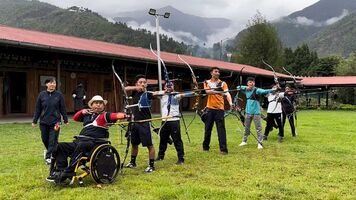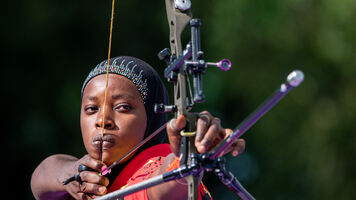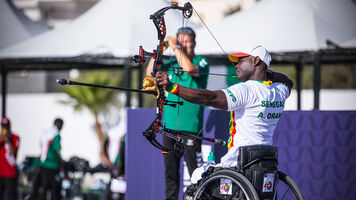Making bows from PVC pipe in the Dominican Republic
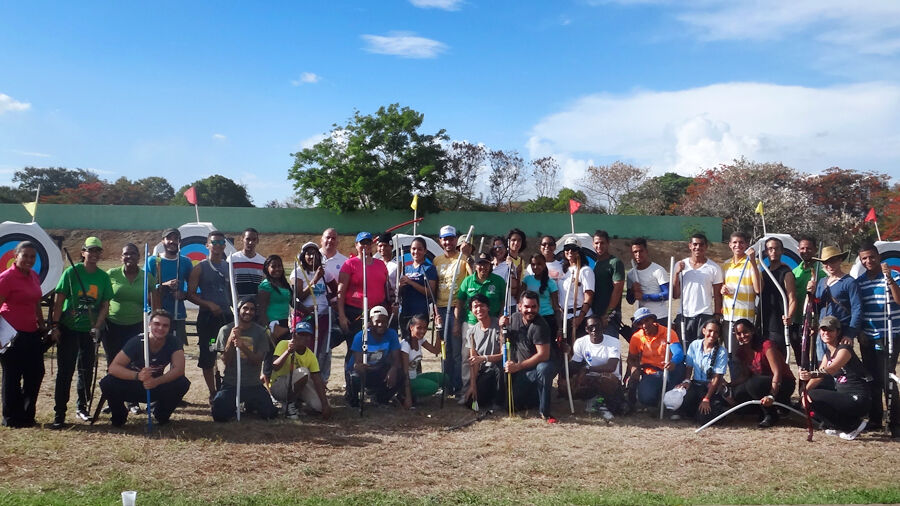
Ludys Tejada attended a World Archery Coaching Seminar near Rio de Janeiro, Brazil in late 2013. She watched a presentation by two lecturers from Colombia on their experience of making simple bows from PVC tubes.
Crediting this talk as an eye opener, certified coach trainer Ludys saw an opportunity to rapidly expand archery in the Dominican Republic in a simple and cheap way. All she needed was some basic tools and a little creativity.
“I already had the creativity,” Ludys says. “So I just needed to find a handy-man friend that could help me with the workmanship: basic sawing, painting and gluing. And someone that wouldn’t mind making the trip to the hardware store!”
That man was Emmanuel Caffaro.
Ludys and Emmanuel made their first PVC bow in about a week. They made a couple of adjustments during the prototyping process to make the build as simple as possible, and just two weeks later they had a dozen working bows to introduce to the 30 university students Ludys would begin teaching archery in January 2014.
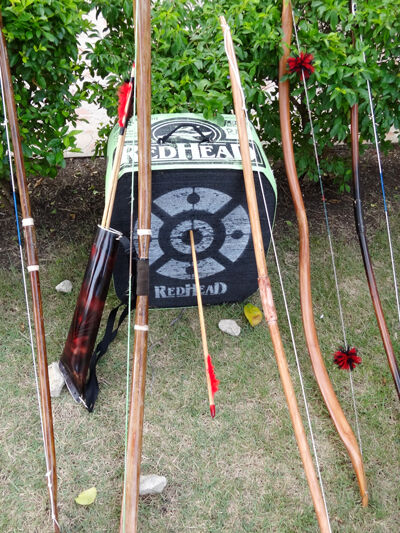
First reviews were good. Some students learnt even quicker with the PVC bows than with beginner equipment bought in stores. Perhaps there were fewer things to worry about since the bows are simpler, or less tiring as the material is so light.
Ludys asked her students to make a working PVC bow as their final exam.
To test their attempts at building a bow, she organised a tournament with the equipment at the university. Emmanuel had to help the students with the basics, but they decorated the bows themselves.
The project was so well received that other universities were invited to make their bows over the next few months so that they could compete in an inter-collegiate tournament.
Two clubs and three universities took up the challenge, entering about 50 archers and bringing the same again in spectators.
Some experienced archers had even made their own simple equipment just to compete and some students had been very creative: PCV had been heated to recurve the limbs or the middle part of the bow crushed to make a window in the handle.
There were even bows painted to give a wooden effect that had to be inspected to confirm they were made of PVC!
For the students, the experience was fun, engaging and made archery available both as a sport and a creative activity. They didn’t just participate in the event; they bought into the production of the tools as well, learning a lot from each other in the process.
At the moment, it is possible to make PVC bows with draw weights between 10 and 40 pounds. The main obstacle is the feeling of the handle in the bow hand. Ludys and Emmanuel are currently testing adding clay grips to the kit.
“Of course, PVC bows are not as accurate as shop-bought equipment,” Ludys admits. “But for introducing people to the sport they are just fine – especially if the price is 90 percent less.”
Ludys has a challenge for you…
“I dare you to build your own PVC bow: if I can do it, I bet you can, too.”






